Synology (FINALLY) has an NVMe Flash Server – The Synology PAS7700 System
Synology are seemingly going ‘all guns blazing’ at Computex 2025 this year, with a wide array of hardware and software solutions being revealed at the event. Many of these we already know about via official and unofficial reveals over the last 6 months or so, how the PAS NVMe flash storage system is one that was actually originally shown last year at the brand’s 2024 Solution Exhibition in Taipei, this was still an early prototype system and was built using an existing 2U chassis and was much more comparable to existing SAS storage systems from the brand. However, the PAS NVMe Flash system has seemingly (and RAPIDLY) evolved since it was first revealed as an early 12 bay prototype 2U rackmount last year into a dual active 4U Behemoth solution that is significantly more focused on leveraging the performance benefits of NVMe, alongside the scale-out, redundancy and failover of other enterprise tier Synology NAS solutions.
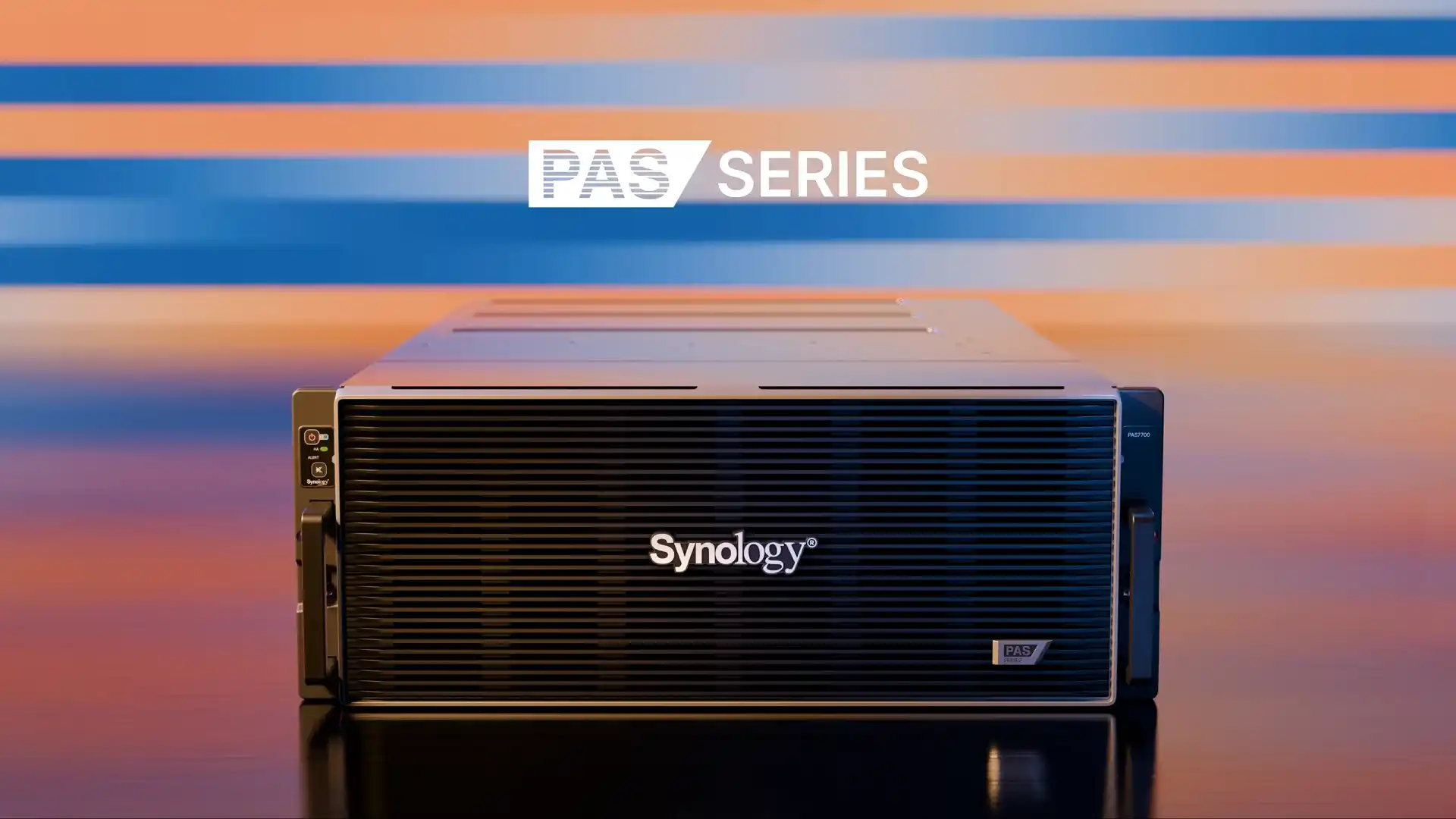
Synology already has an existing range of SSD Flash soltuons, in their Flashstation series, but this proposed PAS7700 system is a completely different class of system against those more classic DSM hardware systems. Synology has been somewhat behind the curve when it comes to NVMe flash systems in the last few years (both entry class m.2 NVMe systems at desktop, but also larger business and enterprise class NVMe over U.2/U.3 compared with competitors such as QNAP (and their FX/FU series), but the PAS is hoping to fill this gap in the brand’s portfolio at this higher tier of buyer. So, what do we know so far?
Synology PAS7700 Hardware Specifications
The Synology PAS7700 is a 4U rackmount dual-node NVMe flash storage system engineered for high-performance, mission-critical enterprise workloads. Designed with a non-disruptive architecture, it enables active-active operations across both nodes, ensuring continuous data availability and efficient load distribution without single points of failure. Each node occupies 2U of rack space and operates independently, yet cooperatively, allowing both to concurrently handle client requests and internal processes. This design eliminates the need for manual failover while maintaining performance even during node maintenance or partial outages.
| Component | Details |
|---|---|
| Form Factor | 4U Rackmount (Dual-node, 2U per node) |
| Node Architecture | Active-Active |
| CPU (per node) | AMD EPYC, 24 Cores |
| Memory (per node) | 64GB DDR4 ECC (Upgradeable to 1TB) |
| Memory Protection | Cache Protection (battery or supercapacitor-based, unconfirmed) |
| Drive Bays | 48 x NVMe (U.2/U.3) total, 24 per node |
| Drive Interfaces | PCIe Gen4 via native AMD EPYC lanes and ASMedia PCIe controller |
| Networking (per node) | 1 x 1GbE Management Port (Copper), 2 x 10GbE Aquantia Ports |
| Expansion Options | Potential PCIe/OCPI slots for additional NICs (details pending) |
| Chassis Dimensions | TBD (Full 4U dual-node chassis, likely hot-swappable) |
| Power Supply | Redundant PSU (assumed, not yet confirmed) |
| Cooling | Enterprise-grade cooling (multi-fan array; details TBD) |
At the heart of each node lies a 24-core AMD EPYC processor, optimized for dense, multi-threaded workloads such as data analytics, database transactions, and large-scale virtualization. These processors provide ample PCIe Gen4 lanes to support high-speed interconnects, storage interfaces, and compute operations. Each node is equipped with 64GB of DDR4 ECC memory out of the box, with upgrade support up to 1TB. This high memory ceiling is particularly beneficial for large-scale caching, deduplication, and inline compression tasks in high IOPS environments. Memory cache protection mechanisms are built in to preserve data integrity during unexpected power loss, using supercapacitors or battery-backed modules.
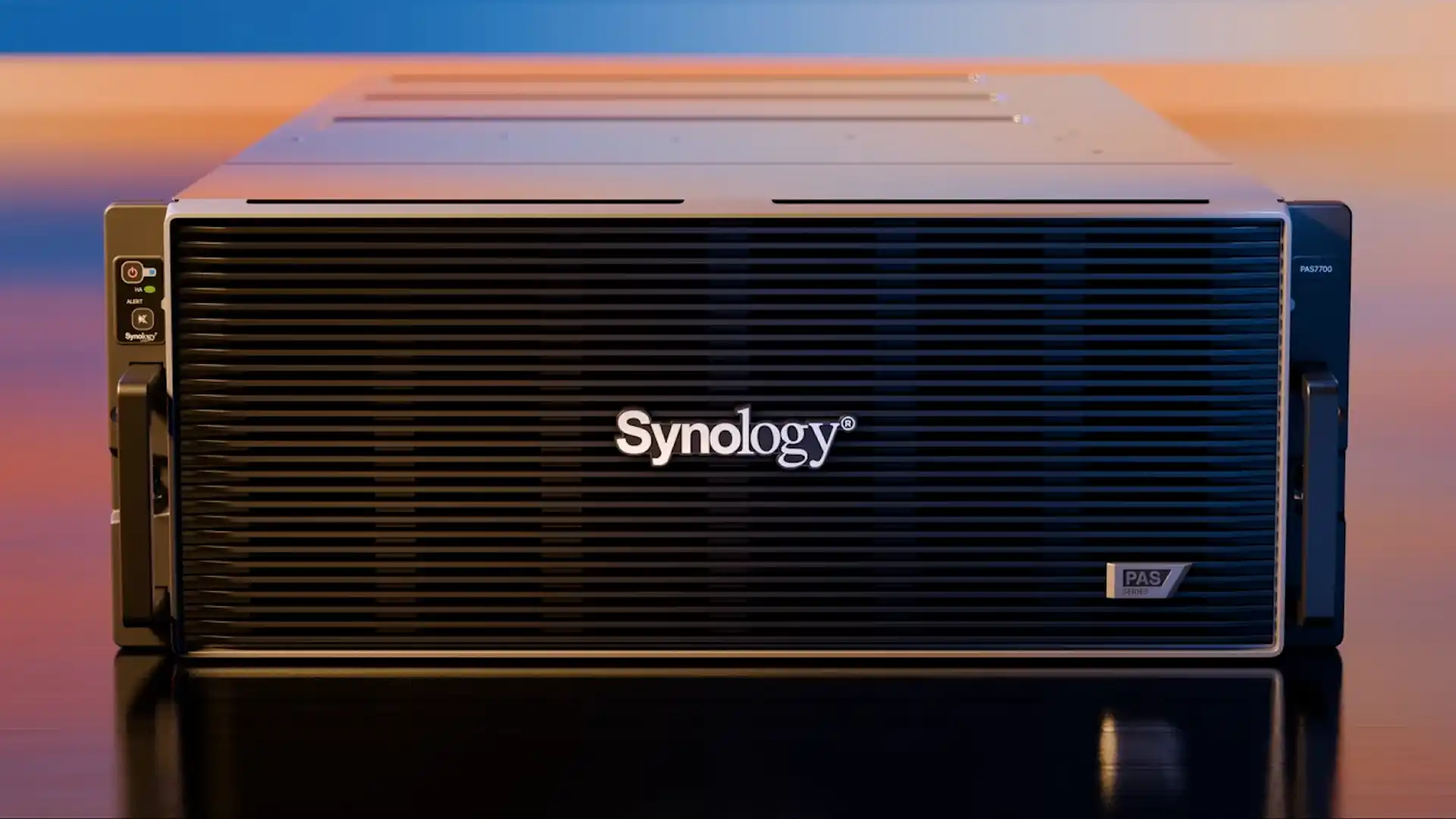
The storage backplane supports a total of 48 U.2 or U.3 NVMe SSDs across the chassis—24 per node—maximizing both performance and density. Drive control is split between the native AMD EPYC-integrated PCIe controllers and additional PCIe switching and management provided by ASMedia Technologies, likely to balance performance across multiple backplanes and mitigate PCIe bottlenecks. This configuration ensures that each SSD can be utilized to its full potential with minimal latency and optimal throughput. Network connectivity includes a dedicated 1GbE copper port per node for management, along with dual 10GbE NICs for data operations. These ports support link aggregation and failover, with options for expansion to higher-speed interfaces expected, though not yet confirmed. The PAS7700 likely supports several PCIe expansion slots internally, allowing future upgrade paths to 25/40/100GbE if required. This flexibility positions the unit for use in diverse network topologies and high-bandwidth enterprise infrastructures.

That said, we should discuss the thorny subject of storage media. Synology has recently implemented a more stringent hardware compatibility policy, mandating the use of Synology-branded or certified storage media in its latest 2025 Plus Series NAS devices. This policy restricts full functionality and support to only those drives that have been validated by Synology, potentially limiting user flexibility and increasing costs due to reduced third-party options. Currently, Synology’s in-house SSD lineup includes SATA SSDs and M.2 NVMe SSDs, with capacities up to 800GB. This raises questions about their plans for higher-performance storage media suitable for systems like the PAS7700, which is designed for demanding enterprise workloads. As of now, Synology has not announced any U.2 or U.3 NVMe SSDs in their product range. Given the PAS7700’s reliance on high-speed NVMe storage, it’s unclear whether Synology will expand its SSD offerings to include higher-capacity and performance options or if they will certify third-party drives for use with this system. The company’s updated compatibility lists will be crucial for users to identify approved drives. Until more information is available, potential PAS7700 users may need to consider the implications of Synology’s hardware compatibility policies on their storage choices.
Synology PAS7700 Services and Flash Protocols
The Synology PAS7700 supports a diverse array of storage access protocols optimized for NVMe over Fabrics (NVMe-oF), ensuring compatibility with modern data center architectures and latency-sensitive applications. These protocols are tailored to support high-throughput and low-latency workloads across both local and remote environments, catering to sectors such as virtualized infrastructure, high-performance computing, and real-time analytics.
Among the supported technologies are NFS RDMA, NVMe-TCP, NVMe over Fibre Channel (NVMe-FC), and NVMe over RoCE (Remote Direct Memory Access over Converged Ethernet). These protocols differ in terms of performance characteristics, implementation complexity, and deployment environments, giving administrators flexibility in aligning the system’s networking stack with existing infrastructure and performance objectives. These include:
-
NFS RDMA (Remote Direct Memory Access):
-
Enhances traditional NFS performance by bypassing the CPU for memory transfers.
-
Significantly reduces latency and CPU usage in environments using NFSv4.x.
-
Ideal for high-performance, low-latency use cases like virtual machines or scientific computing.
-
-
NVMe-TCP (NVMe over TCP/IP):
-
Extends NVMe-oF across standard Ethernet networks without requiring specialized hardware.
-
Enables NVMe-level performance benefits using existing TCP infrastructure.
-
Easier to deploy in enterprise environments with mixed networking equipment.
-
-
NVMe-FC (NVMe over Fibre Channel):
-
Combines the speed of NVMe with the reliability of Fibre Channel.
-
Suitable for enterprises already using Fibre Channel SANs.
-
Offers low-latency performance with high stability and established zoning capabilities.
-
-
NVMe/RoCE (RDMA over Converged Ethernet):
-
Provides near-direct memory access over Ethernet without involving the CPU.
-
Achieves ultra-low latency for applications such as real-time trading or video rendering.
-
Requires a compatible network fabric with lossless Ethernet configuration.
-
We are still awaiting confirmation on whether this will be running on traditional DSM, a dual controller variation (such as found on the current UC3200 0 Active/Active system), a multinode management variation (as found in the GS/GridStation system, or a brand new splinter of DSM services (as found in the DP series with Active Protect).
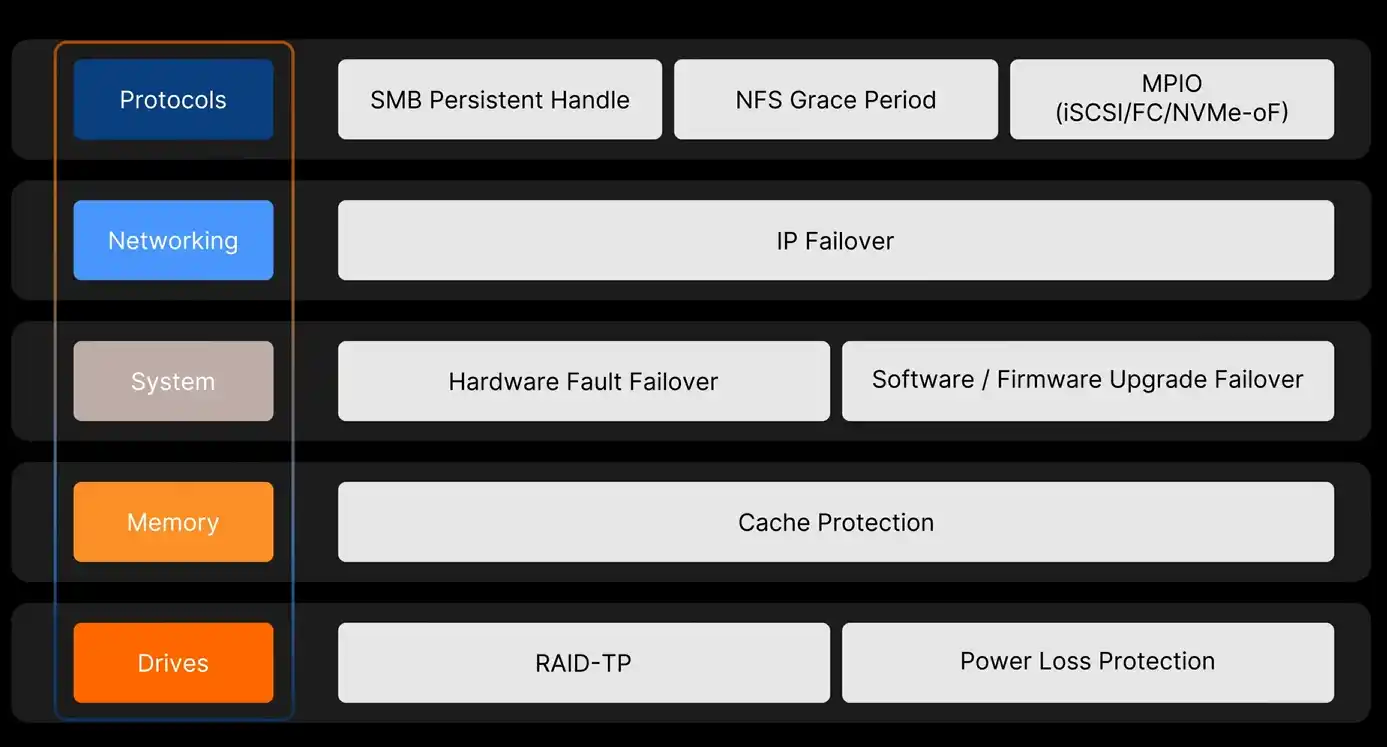
Synology PAS7700 Failover and Redundancy
The Synology PAS7700 is designed with full-stack redundancy to eliminate single points of failure and minimize service disruption across hardware, software, and protocol layers. Its dual-node active-active design enables uninterrupted operations even during firmware updates, system maintenance, or unplanned hardware failures. This architecture ensures that both nodes can operate independently while maintaining synchronized data access and state, effectively enabling non-disruptive service continuity in multi-user enterprise environments. Each layer of the system—from networking to storage to memory—is fortified with specific failover mechanisms. Networking is protected via IP failover configurations, allowing services to automatically reroute through a secondary interface or node should a primary link fail. The system also supports Multipath I/O (MPIO) across iSCSI, Fibre Channel, and NVMe-oF protocols, ensuring high availability and load balancing across multiple paths. On the protocol level, persistent handle support in SMB and grace periods in NFS ensure that client sessions remain intact during failovers or server transitions.

Synology further implements failover at the component and data protection level. Memory modules are equipped with cache protection to safeguard in-flight data in the event of power loss, typically via battery backup or capacitor-based retention systems. On the storage layer, support for RAID-TP (triple parity) adds an extra layer of disk fault tolerance, protecting against up to three simultaneous drive failures. Additionally, enterprise-grade SSDs used in the PAS7700 are expected to include power loss protection (PLP), preserving cached writes during sudden shutdowns.
-
Protocols:
-
SMB Persistent Handles: Maintains client file handles during failover events.
-
NFS Grace Periods: Allows NFS clients to re-establish sessions without data loss.
-
MPIO: Multipath I/O for load balancing and failover across multiple transport paths.
-
-
Networking:
-
IP Failover: Automatically reroutes network services to a standby node or NIC if a primary fails.
-
-
System-Level:
-
Hardware Failover: One node takes over if the other becomes non-functional.
-
Upgrade Failover: Supports live system or firmware updates without downtime.
-
-
Memory:
-
Cache Protection: Retains volatile memory contents in the event of power loss using supercaps or batteries.
-
-
Storage:
-
RAID-TP: Triple parity RAID support for enhanced data redundancy.
-
Power Loss Protection (PLP): SSDs preserve unwritten data during power failure.
-
Whether other specific SSD/Flash services that are currently available on devices like the Flashstation series (such as RAID F1 for controlled and predicted NAND wearing) will also be integrated here on scale are yet to be confirmed. While the full software environment and feature set of the Synology PAS7700 are yet to be confirmed, its hardware architecture and protocol support position it as a serious entry into the enterprise flash storage segment. With dual-node active-active operation, extensive NVMe protocol compatibility, and comprehensive failover mechanisms, the PAS7700 is clearly designed for organizations that require uncompromising uptime and performance. As more details emerge at Computex 2025, the PAS7700 is expected to clarify its role within Synology’s broader storage portfolio—particularly how it compares to the UC series and where it fits in demanding environments such as virtualized infrastructure, high-frequency transactional workloads, and critical business continuity deployments.
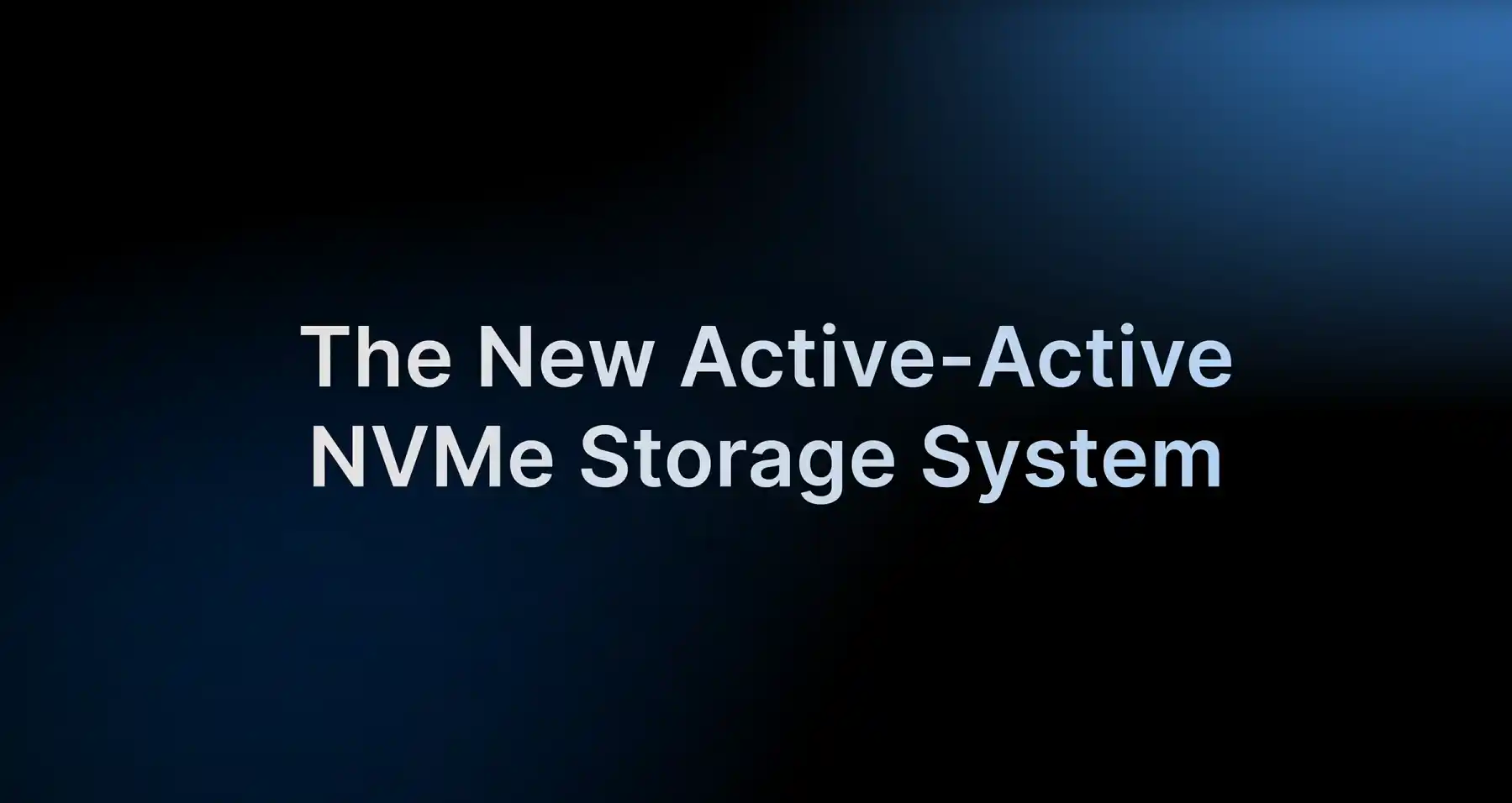
🔒 Join Inner Circle
Get an alert every time something gets added to this specific article!
This description contains links to Amazon. These links will take you to some of the products mentioned in today's content. As an Amazon Associate, I earn from qualifying purchases. Visit the NASCompares Deal Finder to find the best place to buy this device in your region, based on Service, Support and Reputation - Just Search for your NAS Drive in the Box Below
Need Advice on Data Storage from an Expert?
Finally, for free advice about your setup, just leave a message in the comments below here at NASCompares.com and we will get back to you. Need Help?
Where possible (and where appropriate) please provide as much information about your requirements, as then I can arrange the best answer and solution to your needs. Do not worry about your e-mail address being required, it will NOT be used in a mailing list and will NOT be used in any way other than to respond to your enquiry.
Need Help?
Where possible (and where appropriate) please provide as much information about your requirements, as then I can arrange the best answer and solution to your needs. Do not worry about your e-mail address being required, it will NOT be used in a mailing list and will NOT be used in any way other than to respond to your enquiry.

|
 |
| Where to Buy a Product | |||
|
|
    
|

|
VISIT RETAILER ➤ |
 |
    
|

|
VISIT RETAILER ➤ |
 |
    
|

|
VISIT RETAILER ➤ |
 |
    
|

|
VISIT RETAILER ➤ |
We use affiliate links on the blog allowing NAScompares information and advice service to be free of charge to you. Anything you purchase on the day you click on our links will generate a small commission which is used to run the website. Here is a link for Amazon and B&H. You can also get me a ☕ Ko-fi or old school Paypal. Thanks! To find out more about how to support this advice service check HERE
Beelink ME Pro NAS Revealed
Best SOLID STORAGE NAS of 2025
Should You Worry About the NanoKVM Hidden Microphone?
Best Cheap NAS of 2025
Minisforum MS-02 Ultra - WHO IS THIS FOR??? (The First 48HRs)
Why People Use TrueNAS, UnRAID and Proxmox to Turnkey NAS (Synology, QNAP, etc)
Access content via Patreon or KO-FI
Discover more from NAS Compares
Subscribe to get the latest posts sent to your email.


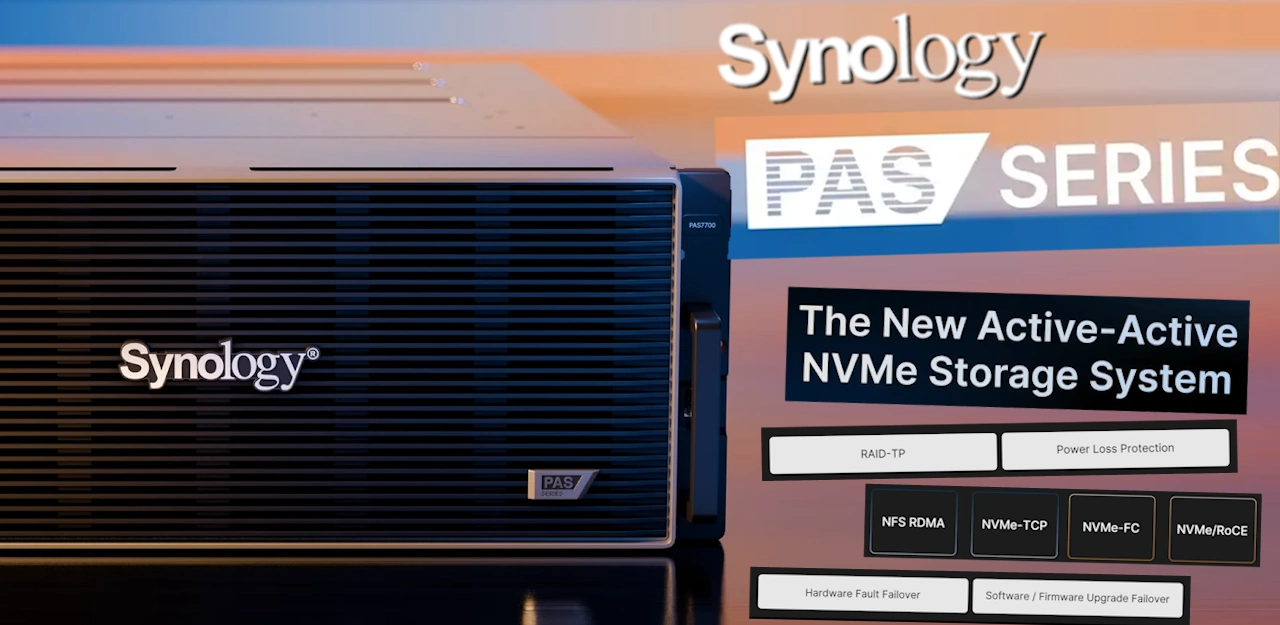



PAS series… I looked up everywhere no mentions anywhere… you managed to be the only one to find this out…! nice!
REPLY ON YOUTUBE